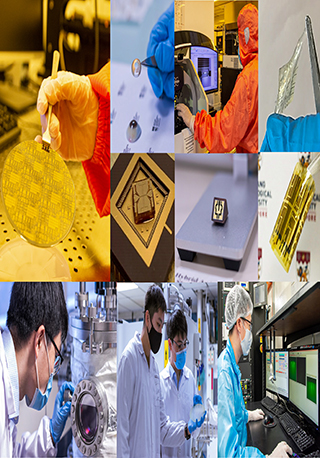Smart Materials, Electronics and Photonics
Pioneering the Future with Advanced Nanomaterials
The World is currently undergoing the fourth industrial revolution (Industry 4.0) which represents the combination of cyber-physical systems, Internet of things (IoT) and Internet of Systems. At the same time, it is also facing major challenges such as climate change, energy sustainability, healthcare, water and food security due to the increased global warming, urbanisation, rapid growth and aging of world population. These global trends are driving the demands for more intelligent products which are enabled by technologies combining smart materials, electronics and photonics.
In the last few decades, we have already witnessed the big transformation of our lifestyles with the invention of new materials, electronics and photonics devices. Examples are high computing power and connectivity of mobile gadgets, wide-bandwidth internet, energy efficient LEDs and lightings. Looking into the future, it is envisaged that novel materials, smart electronics and photonics will continue to deliver impactful technologies which will transform and impact our lives. For example, novel advanced materials such as 2D, CNT, h-BN, 3D graphene, organic materials will enable future products such as integrated circuits, ubiquitous sensors, and actuators to significantly increase the computing power, energy generation and storage efficiency, sensing range and resolution, and thermal dissipation capabilities. Likewise, smart electronics and photonics which are more intelligent, energy efficient and better connectivity will continue to be significant enablers to fuel the growth of a wide range of applications in IoT for industry automation, smart cities, green production, sustainable urban farming, and remote health monitoring . Hence, research in this thrust is imperative as we strive to become a smarter, more self-sustaining and environmental-friendly society.
The research in this thrust is drawn from the foundational strengths of five research centres in novel 2D and 3D nanomaterials and photonics materials, silicon and compound semiconductor devices, sensors, analogue/mixed-signal/RF and mm-wave circuit designs, mid-infrared photonics, optoelectronics, nano-photonics, bio-photonics, optical fibre communication, fibre laser, and semiconductor lightings and displays. The research thrust is supported by more than 72 faculty, 162 research scientists, 153 graduate students with world-class research facilities including two class 10/100 clean rooms, multiple MOCVD and MBE systems, speciality-fibre drawing tower, photonics device fabrication and characterisation laboratories, electronic material and device characterisation laboratories, modelling and simulation laboratories.
Themes
| Sub-topics | Research Centre(s) |
|
| Sub-topics | Research Centre(s) |
|
| Sub-topics | Research Centre(s) |
|


